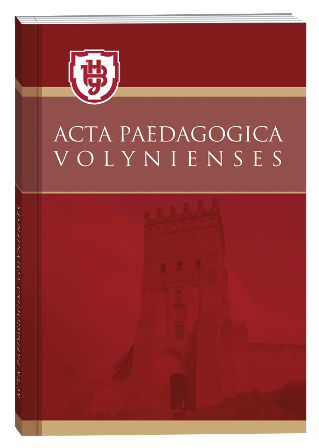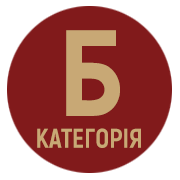COMMUNICATION OF CHILDREN WITH SEVERE SPEECH DISORDERS USING NATURAL MEANS OF EXPRESSION: PECULIARITIES OF LEARNING
DOI:
https://doi.org/10.32782/apv/2023.2.19Keywords:
severe speech disorders, communication, expressive means of communication, gestures, facial expressions, emotions, educationAbstract
The article covers the problem of teaching communication of children without oral speech using non-verbal means of communication. In the process of research analysis, it was found that for children without speech, due to the personal characteristics of psychophysical development and the lack of the ability to communicate verbally, the use of non-verbal means is becoming relevant, thanks to which they can express their needs and desires, transfer the knowledge and skills they have acquired. The purpose of the study is to determine the concept and role of natural expressive means in the communicative development of children without speech, methods of teaching children to communicate with the help of certain nonverbal means. In the study, the sequence of actions in learning natural gestural communication is described, the main groups of gestures and the requirements for their use are defined. Techniques for forming a child's ability to make eye contact with the environment, to adequately respond to appeals, are revealed. It has been proven that children with disabilities are taught to use gestures to accompany oral speech. The sequence of such gestures corresponds to sonorous oral speech, provided that gestural communication accompanies speech. The article reveals the concept of «gestures» as hand movements expressing the inner state of a person, pointing to any object in the external environment, and «emotions» as a component of symbolic non-verbal activity and their significance in human life. It has been proven that children with special educational needs are taught to use gestures to accompany oral speech. The sequence of such gestures corresponds to sonorous oral speech, provided that gestural communication accompanies speech. Gestures under such conditions are performed very slowly, during the composition of sentences they require compliance with certain rules, they allow visualizing the image of a particular word or action. It was established that the choice of gestures is determined by the requirement of interests and subordinated to the child's specific life environment. Techniques for the formation in children with severe speech disorders of the ability to express their emotions and manage them in accordance with the situation, and the ability to understand the emotions of other people, are presented.
References
Боряк О., Косенко Ю. Альтернативна комунiкацiя як засiб розвитку мовленнєвої діяльності дітей із комплексними порушеннями. Актуальнi питання гуманiтарних наук. Вип 35, том 1, 2021. С. 264–270.
Єжова Т. Є. Альтернативна комунікація як засіб соціальної реабілітації дітей з обмеженими можливостями життєдіяльності. Актуальні проблеми навчання та виховання людей з особливими потребами, 2011. № 8. С. 73–80. URL : http://nbuv.gov.ua/UJRN/apnvlop_2011_8_11
Мартиненко І. В. До проблеми порушень комунікації у дітей із тяжкими порушеннями мовлення. Науковий часопис НПУ імені М. П. Драгоманова. Серія 19. Корекційна педагогіка та психологія: зб. наук. праць. Київ : НПУ імені М. П. Драгоманова, 2010. № 16. С. 288–291.
Марченко І. С. Педагогічні технології комунікативного розвитку дітей із тяжкими порушеннями мовлення. Навчально-методичний посібник. Київ: ТОВ «ДІА». 2019. 147 с.
Міхова А.Г. Емоції і прояви емоцій: історичний екскурс (стресові та стресоподібні стани). Наука і освіта, 2010. № 3. С. 95–98.
Компанець Н. Готовність до навчання читання: індивідуальний підхід. Системи допоміжної альтернативної комунікації для дітей з аутизмом. Дефектологія, 2011. № 2. С. 20–24.
Січкарчук Н. Д. Використання невербальним засобів спілкування на логопедичних заняттях зі старшими дошкільниками з моторною. Науковий часопис імені М. П. Драгоманова. Серія 19. Корекційна педагогіка та психологія. Київ : НПУ імені М. П. Драгоманова, 2012. № 22. С. 243–245.
Трофименко Л. І. Особливості розвитку особистості дошкільників з мовленнєвими порушеннями. Теоретичне і методичне забезпечення навчання та виховання осіб з особливими освітніми потребами. Донбаський державний педагогічний університет, 2018. Том 8. С. 224–229.
Anderson, A. E. (2002). Augmentative communication and autism : A comparison of sign language and the Picture Exchange Communication System. Doctoral dissertation. Dissertation Abstracts International : Section B : The Sciences and Engineering, 62, 426 р.
Walker, M., Parson, P., Cousins, S., Carpenter, B. and Park, K. (1985). Symbols for Makaton. Back Hill, UK: The Resource Centre.







